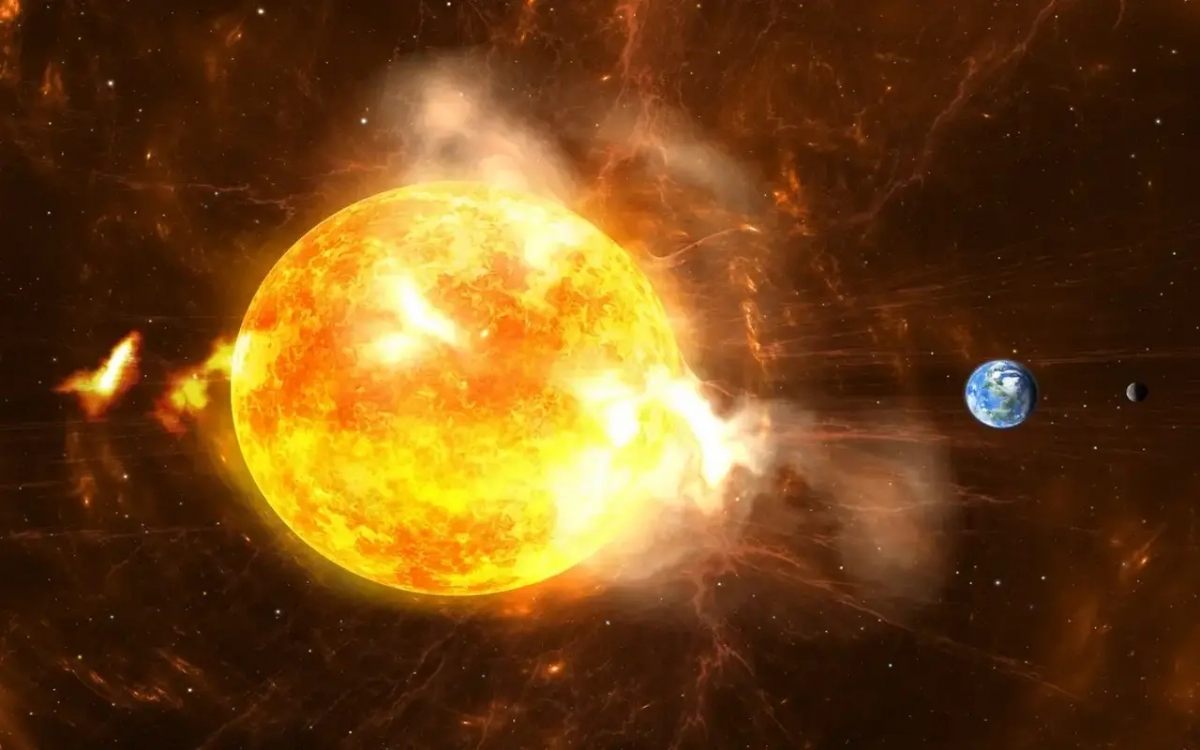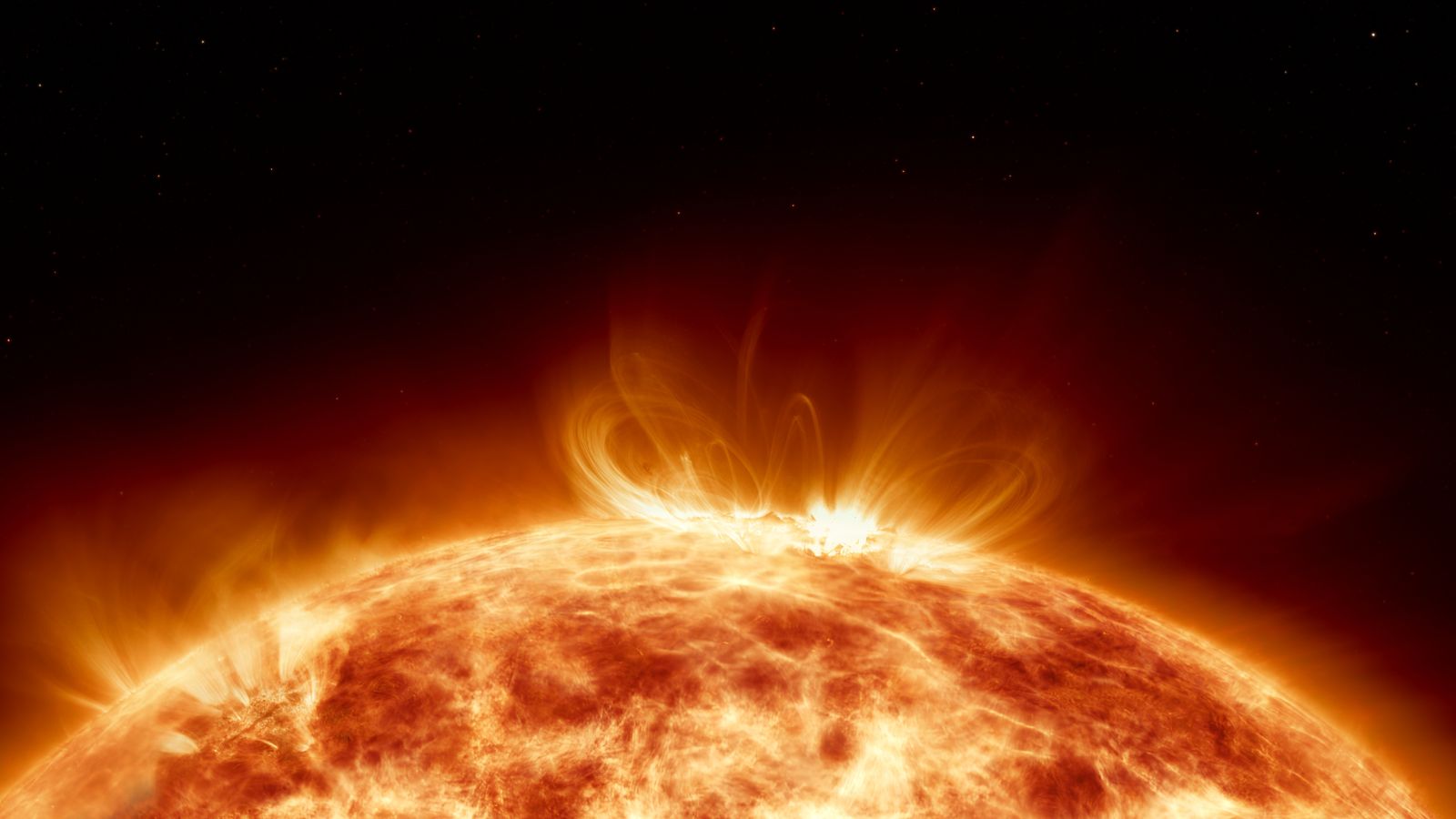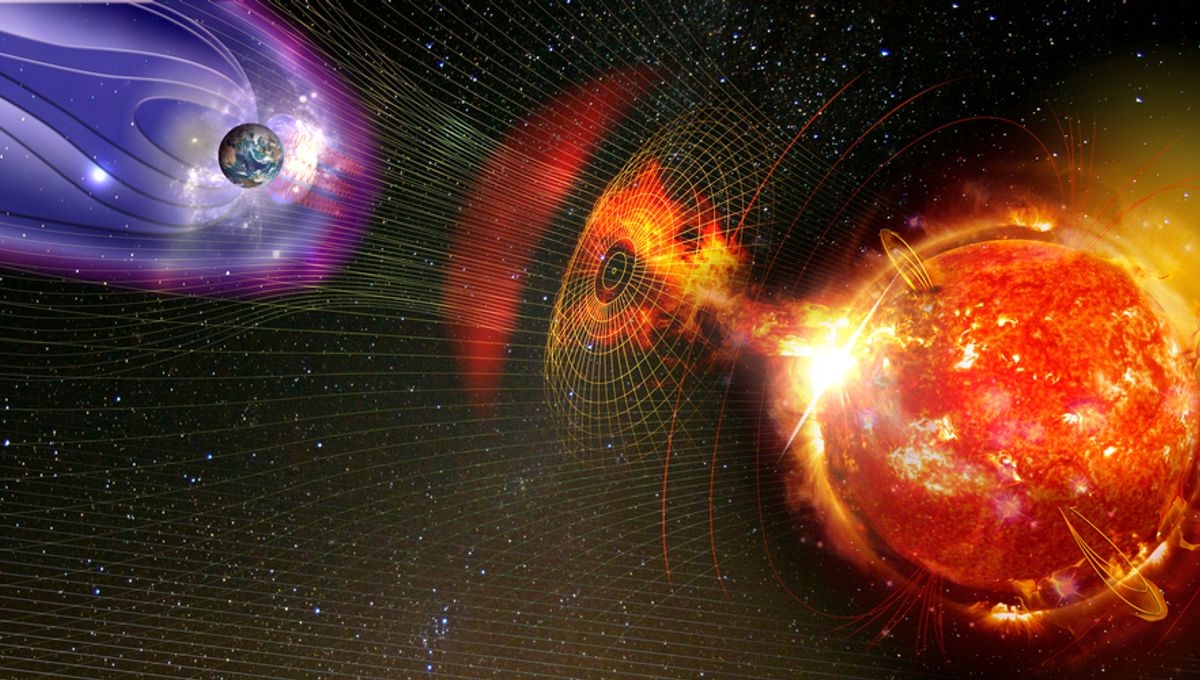The Biggest Solar Storm in History

Last night, Earth experienced the strongest geomagnetic storm since 2017, but it was insignificant compared to the one triggered by the strongest solar storm on record, known as the Carrington Event in 1859.
Now we are learning that the disruption of Earth's magnetic field during the Carrington Event was larger than previously estimated. A combination of modern digital monitoring and detailed reconstruction has revealed more than previously thought possible by extracting records of the Earth's magnetic field at the time. This finding reveals how vulnerable modern society could be to a repeat of such an event.
On September 1, 1859, the Sun blasted electrified gas and subatomic particles with the energy of 10 billion atomic bombs toward the planet, disrupting telegraph communications, literally shocking operators and setting systems ablaze. The Northern Lights were reported as far south as Cuba and Hawaii, allowing witnesses to read newspapers by the light of the auroras alone.
Solar storms have occurred throughout Earth's existence. But our estimates of scale were based on very indirect measurements, such as the presence of certain radio-isotopes in tree rings. Reports of enormous auroras in recorded history can give clues to the timing of solar storms, but are of little use in estimating magnitude. As a result, our data on how big solar storms can be dates back less than two centuries.
Fortunately, the Carrington Event, the largest storm at the time, occurred when such monitoring was in its infancy. It turns out that the records kept at the time contain more information about the event than previously thought, which is not good news for those preparing for future impacts in a more wired world.
If the Carrington Incident had occurred even a few decades after its actual date of 1859, there would have been not only telegraphs, but electricity and long electrified railroad lines. But at least we would have a better idea of its scale.
However, the observatories of Greenwich and Kew in the UK both had magnetograms measuring fluctuations in the strength and direction of the Earth's magnetic field, which were later found to have arisen mainly in response to solar activity.
As solar activity distorted the Earth's magnetic field, the magnets bent, causing light to move across the paper. The stronger the distortion, the farther the light shifted. The paper was mounted on a slowly rotating drum, similar to the one disaster movies taught us to associate with seismometers.
Unfortunately, neither system was built in anticipation of a geomagnetic field pulse as strong as the one in 1859. As a result, the mirror-bearing metal oscillated so widely that during the magnetic storm that preceded the Carrington Event, and again during the event itself, the beam of light was pushed out of the photographic paper for 12 hours. Such large movements tell us that these were two extremely powerful events, but not how powerful.
This is where the digitization of the magnetogram records has been an unexpected boon. The paper records were carefully archived and, according to a team led by Dr. Ciaran Beggan of the British Geological Survey, "are in relatively good condition given their age and the way they have been preserved." After being carefully removed from their bindings, the daily records were photographed and digitized, creating a continuous series instead of disjointed days.
By measuring the speed of movement of light beams before they left the paper and after they returned, the authors calculated the rate of change of the field, which they estimated at a minimum of 500 nT/min. Given that once-in-a-century storms at London's latitude are expected to produce variations of 350-400 nT/min, even this base value is extraordinary. 
By measuring the speed of movement of light beams before they left the paper and after they returned, the authors calculated the rate of change of the field, which they estimate to be a minimum of 500 nT/min. Given that once-in-a-century storms at the latitude where London is located are expected to produce variations of 350-400 nT/min, even this base value is extraordinary.
Apart from the problem of how far light travels away from paper, translating the measured motions into modern SI units is not easy. Yet Beggan and co-authors have performed detailed reconstructions using comparisons between the two measurements to translate the motions into nanotesla changes in field strength. Changes in the orientation of the field are equally important.
Two years after the Carrington Event, a scientific paper estimated the strength of the field based on such data and reached similar conclusions. However, 20th century astronomers concluded that the initial estimates were exaggerated, as they had never encountered such a large event.
"When we look at the rate of change... we see that it's at least 500 nanotesla per minute, which supports what the original 1861 papers suggested," Beggan told New Scientist. "It proves once again that the Carrington storm was an extreme event."
Rival scientific communities created these magnetograms because before GPS, the Earth's magnetic field was crucial for navigation. As early as the 17th century, Edmond Halley organized voyages to map how the field changed across the Atlantic Ocean, before realizing that changes over time had to be taken into account. It is unfortunate that the two sets of records we have are only 20 kilometers (12.4 miles) apart and do not represent global coverage, but more piecemeal data has been collected from Finland, India and Guatemala, among other places.
Thanks for reading.























































